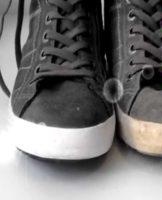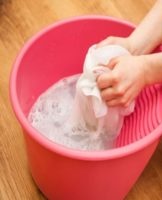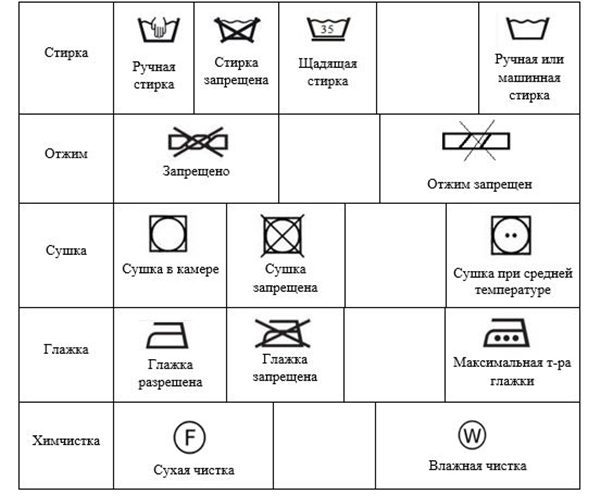Decoding of icons about washing clothes and a table with descriptions of symbols
Washing
 | Washing is allowed. |
 | It is strictly forbidden to wash the thing. |
 | You cannot wash in a washing machine. |
 | Wash gently, do not rub the product and wring it gently. |
 | Delicate wash with minimum spin. |
 | Delicate cycle with a washing temperature of 30°C. |
 | Wash at a temperature not exceeding 30°C. |
 | Wash clothes at temperatures up to 40°C. |
 | Washing temperature up to 50°C. |
 | Wash up to 60°C. |
 | Can be washed at 95°C and boiled in cotton or white linen. |
 | Only hand washing is allowed. |
 | It is forbidden to wring and twist the thing. |
With the purchase of clothes from the wrong side, a person notices a label with strange drawings and inscriptions. Few people attach importance to it and do not think about their goal at all. If you correctly decipher the icons on the washing clothes, you can avoid many problems when caring for things.
The role of badges on clothing labels
Badges on clothes can be compared to a secret message or markings, but coming from the manufacturers themselves. After washing themselves, the inexperienced housewives take out of the drum a pink blouse, although before it was white.Some people get a thing several sizes larger. Creating labels with badges, the manufacturer leaves a kind of instruction with rules for caring for the thing.
Where to look for designations on things?
Care labels can be seen on any item you purchase. Where can I find these tags? For each item, the location is different - on the waistline of the inside, under the collar, on the side seams. On the bra they are on the back strap, on the panties there is a side inseam.
For the manufacture of labels, delicate material is used so that it does not cause discomfort when wearing. In addition to clothing care badges, it indicates the country of manufacture and the composition of the material from which it is made. But some things are not labeled.
We are talking about clothes designed for the little ones - children. These are the things newborns need. Manufacturers indicate information about a particular product on special labels. They are removed before being worn.
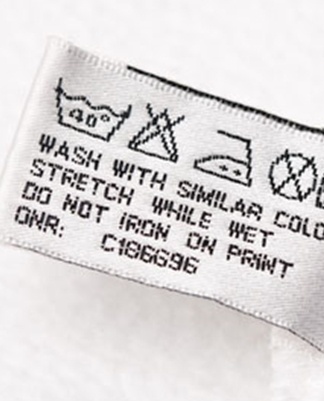
What do the basic symbols mean
It is not so difficult to decipher the designations on the clothes. There are 5 symbols in total:
- washing;
- bleaching;
- Dry cleaning;
- drying;
- ironing.
 | Dry cleaning with solvents. |
 | Cleaning with perchlorethylene-based products. |
 | Delicate cleaning with perchlorethylene-based products. |
 | Cleaning with hydrocarbons and triflotrichloromethane (freon, white alcohol) |
 | Gentle cleaning with hydrocarbons and triflotrichloromethane. |
 | Cleaning without using liquid preparations (dry cleaning). |
 | Dry cleaning is prohibited. |
 | It is allowed to bleach the product. |
 | Laundering is prohibited. |
 | The use of bleach is permitted. |
 | Do not use chlorine for bleaching. |
 | Chlorine-free bleaching. |
Another designation is spin. Recently, manufacturers have identified it as a separate step in product maintenance. Despite this, spinning is directly related to washing.
Washing
The icon looks like a basin filled with water. Warns the person whether washing should be done by hand or by machine. It also provides information on water temperature and spin characteristics. A crossed basin means that the product should not be washed.
Manual
The same basin of water is used, but with a hand lowered into it. According to the manufacturer's recommendation, it is best to use a hand wash so that the item does not deteriorate. Water temperature may also be indicated, but not always. 40 degrees are optimal numbers, which it is forbidden to exceed.
When washing by hand, it is forbidden to rub it with your hands and twist it.

In the washing machine
If a basin of water is drawn on the label, it means that the product is machine washed. On the other hand, the icon indicates that manual mode is also possible. If one line is drawn under the pelvis - a gentle mode, two - a delicate mode. In the latter case, a lot of water is used when washing, the speed is reduced, and the rinsing is accelerated.
Spinning
The pictogram looks like a candy crossed out with two lines. This suggests that the clothes are not wrung or twisted. Instead of a candy icon, there's a rectangle with two slanted lines inside.
Drying
The care step symbol is a square. With the help of additional panels, the manufacturer explains the specifics of drying. If there is a circle inside the square, the product can be dried in a special chamber.Exactly the same sign, only crossed out, suggests the opposite.
 | Drying and spinning the item is allowed. |
 | Dry at low temperature. |
 | Dry at medium temperature. |
 | High temperature drying. |
 | Drying and spinning in an automatic machine are prohibited. |
 | The article can be dried. |
 | Dry horizontally. |
 | Only vertical drying without spinning. |
 | Dry vertically on a string. |
 | Dry in the shade. Direct sunlight is prohibited. |
 | Drying is prohibited. |
The drying temperature is determined by the number of dots inside the circle. A person can see one, two or three. One point corresponds to a low temperature, two to a medium temperature, three to a high temperature.
Ironing
The most understandable icon, since iron is chosen as the designation. The use of steam mode is indicated by an iron with a burst of steam. The same numbers, but crossed out, mean that it is forbidden to carry out these operations with the thing.
The temperature of the soleplate of the iron is chosen for each type of fabric. As a general rule, the degrees are indicated inside the pictogram. The same points can be used instead.
 | The thing can be ironed. |
 | Clothes cannot be ironed. |
 | You cannot vaporize the product. |
 | Ironing temperature up to 120°C (acetate, polyacryl, nylon, nylon, viscose). |
 | Ironing up to 130°C (viscose, polyester, silk, wool) |
 | High ironing temperature - up to 200°C (cotton, linen) |
 | The ironing temperature is not higher than 140°C. |
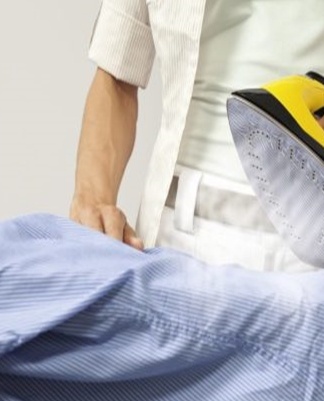
Dry cleaning
Dry cleaning pictogram - circle. It can be empty, contain a letter or be crossed out. There are two types of dry cleaning:
- Dry.
- Wet.
Professional dry cleaning of linens
As a rule, this is an empty circle. If the letters P or F are depicted inside the circle, then it is allowed to use special chemical compounds during the procedure. The underscore indicates delicate cleaning.
Professional wet cleaning
The icon for this type of chemical cleaning is the Latin letter W. Therefore, a cross indicates the opposite.

Laundry bleaching
Empty triangle - the procedure is valid for the thing. The crossed triangle is the opposite direction. He also says that washing powders with a whitening effect are unacceptable to use.
Recently, the Latin letters indicating chlorine cannot be seen inside the badge. The connection is considered dangerous for humans and is therefore prohibited in many countries. Hatching inside with two oblique lines indicates the possibility of using oxygen-containing bleaches.
Table with washing decoding icons

